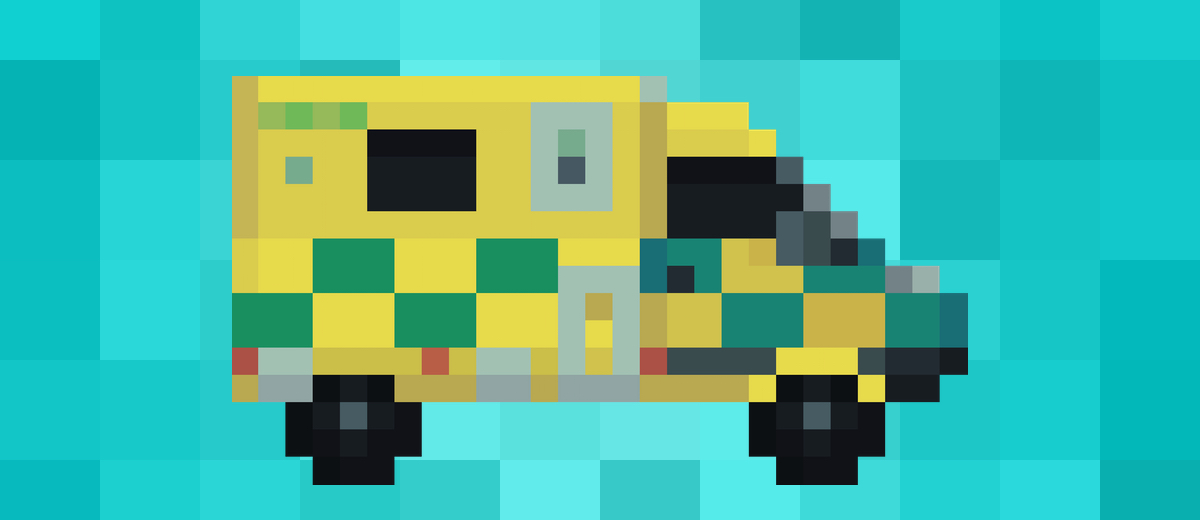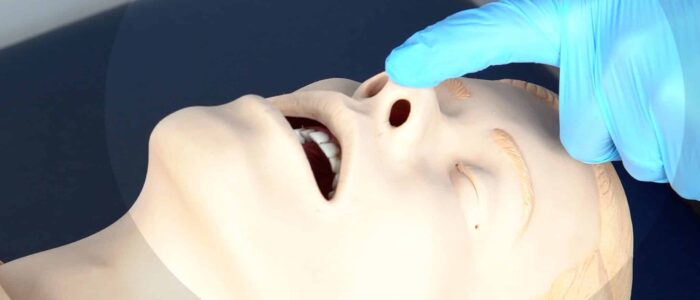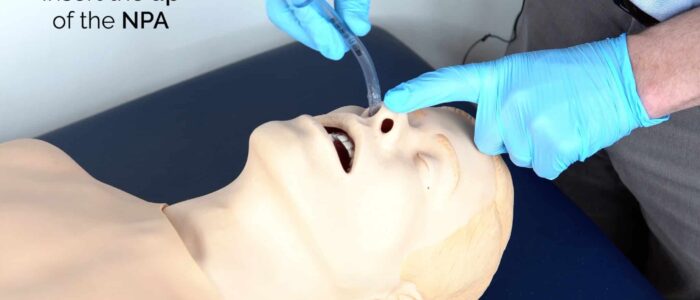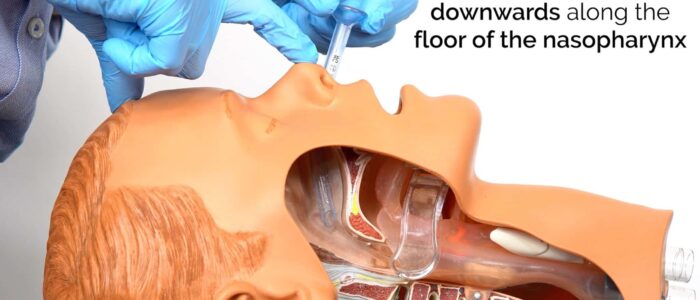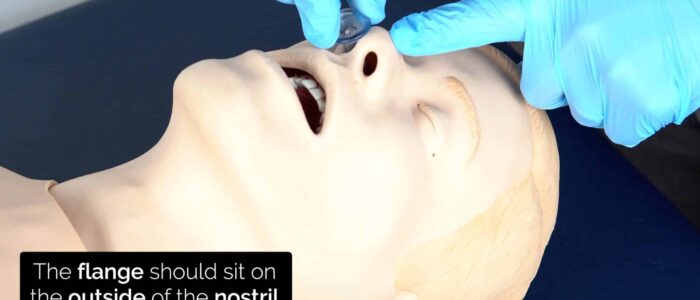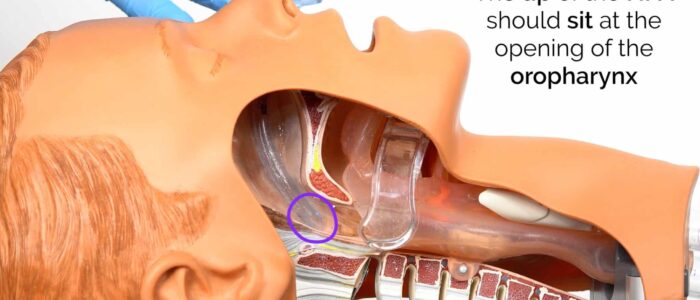- 📖 Geeky Medics OSCE Book
- ⚡ Geeky Medics Bundles
- ✨ 1300+ OSCE Stations
- ✅ OSCE Checklist PDF Booklet
- 🧠 UKMLA AKT Question Bank
- 💊 PSA Question Bank
- 💉 Clinical Skills App
- 🗂️ Flashcard Collections | OSCE, Medicine, Surgery, Anatomy
- 💬 SCA Cases for MRCGP
To be the first to know about our latest videos subscribe to our YouTube channel 🙌
This nasopharyngeal airway insertion guide provides a step-by-step approach to inserting a nasopharyngeal airway in an OSCE setting. Insertion of a nasopharyngeal airway may be assessed in an OSCE as an individual skill, in combination with other airway management skills or as part of an ABCDE assessment.
Nasopharyngeal airway
A nasopharyngeal airway is a hollow soft plastic tube with a bevel at one end and a flange at the other. The airway is inserted into the nasal passageway and sits in the posterior pharynx.
Nasopharyngeal airways are typically used to bypass obstructions in the mouth, nose, nasopharynx or base of the tongue. They are typically better tolerated (and less likely to trigger the gag reflex) in patients who are partly or fully conscious compared to oropharyngeal airways.
Nasopharyngeal airways should not be used in patients who may have sustained a skull base fracture, due to the small but life-threatening risk of the NPA entering the cranial vault.
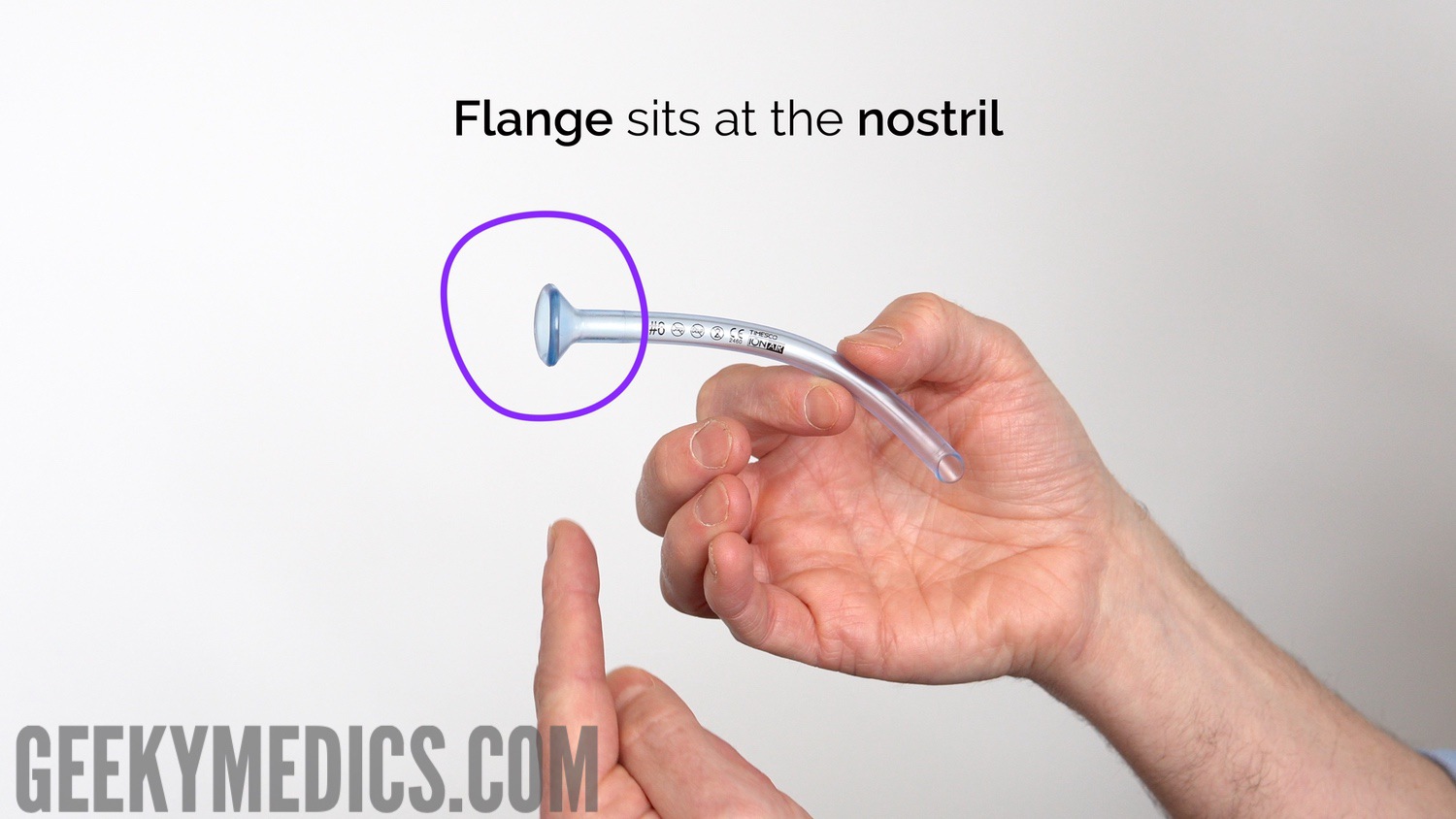
Insertion of a nasopharyngeal airway
Sizing the airway
Nasopharyngeal airway sizes are described using their internal diameter in millimetres (usually the range of sizes is approximately 2-9mm depending on the manufacturer).
The appropriate airway size can be determined by measuring from the tip of the patient’s nose to the tragus of the ear (i.e. soft airway = measure ‘soft to soft’).
The average size of a nasopharyngeal airway is 6-7mm for a woman and 7-8mm for a man.
Inserting the airway
To insert a nasopharyngeal airway:
1. Check the patency of the patient’s right nostril
2. Lubricate the airway.
3. Insert the airway bevel-end first and gently push the airway downwards along the floor of the nasopharynx
4. If any obstruction is encountered, remove the airway and try the left nostril. The tip should sit just above the epiglottis, and the flange should be at the tip of the nose.
5. Maintain head-tilt chin-lift or jaw thrust and assess the patency of the patient’s airway by looking, listening and feeling for signs of breathing.
To complete the procedure…
Continue to monitor the airway and deliver interventions as required (e.g. basic life support, ABCDE assessment)


